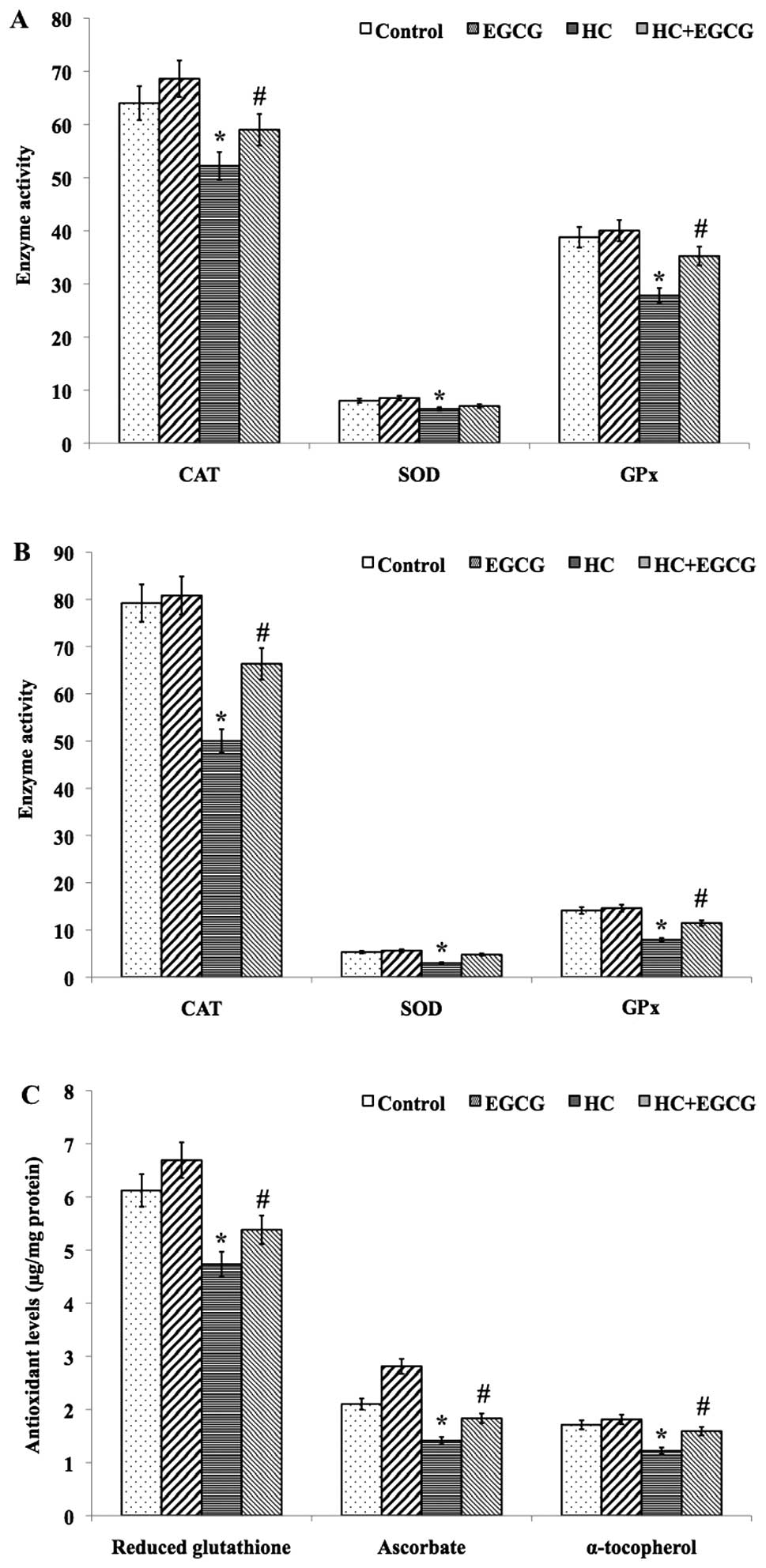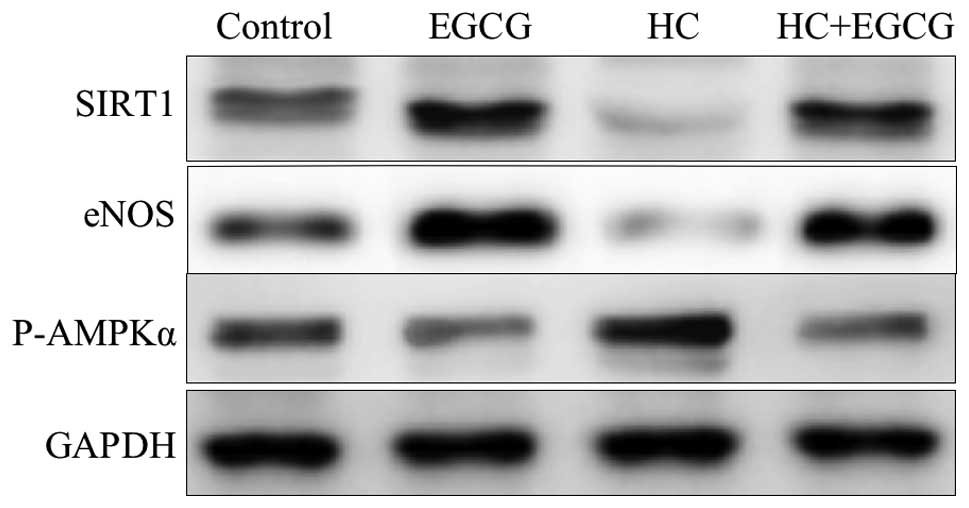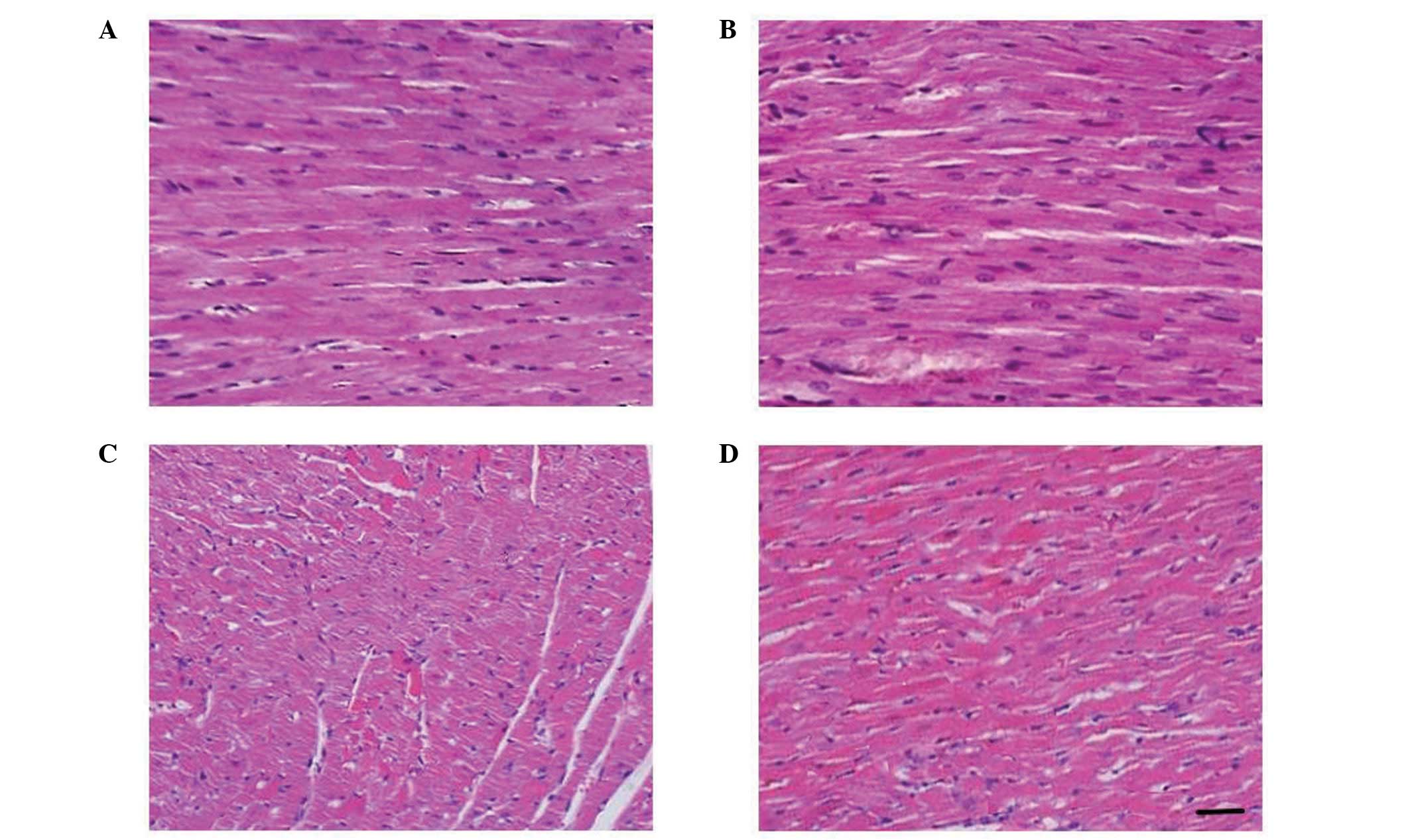|
1
|
Ferrières J: The French paradox: lessons
for other countries. Heart. 90:107–111. 2004. View Article : Google Scholar
|
|
2
|
Walker AF: Of hearts and herbs. Biologist.
43:177–180. 1996.
|
|
3
|
Frankel EN, Waterhouse AL and Teissedre
PL: Principal phenolic phytochemicals in selected Californian wines
and their antioxidant activity in inhibiting oxidation of human
low-density lipoproteins. J Agric Food Chem. 43:890–894. 1995.
View Article : Google Scholar
|
|
4
|
Vinson JA, Teufel K and Wu N: Green and
black teas inhibit atherosclerosis by lipid, antioxidant, and
fibrinolytic mechanisms. J Agric Food Chem. 52:3661–3665. 2004.
View Article : Google Scholar : PubMed/NCBI
|
|
5
|
Aviram M and Eias K: Dietary olive oil
reduces the susceptibility of low-density lipoprotein to lipid
peroxidation and inhibits lipoprotein uptake by macrophages. Ann
Nutr Metab. 37:75–84. 1993. View Article : Google Scholar
|
|
6
|
Stangl V, Dreger H, Stangl K and Lorenz M:
Molecular targets of tea polyphenols in the cardiovascular system.
Cardiovasc Res. 73:348–358. 2007. View Article : Google Scholar
|
|
7
|
Chan K, Lu R, et al: NRF2, a member of the
NFE2 family of transcription factors, is not essential for murine
erythropoiesis, growth, and development. Proc Natl Acad Sci USA.
93:13943–13948. 1996. View Article : Google Scholar : PubMed/NCBI
|
|
8
|
Araujo JA, Barajas B, Kleinman M, et al:
Ambient particulate pollutants in the ultrafine range promote early
atherosclerosis and systemic oxidative stress. Circ Res.
102:589–596. 2008. View Article : Google Scholar : PubMed/NCBI
|
|
9
|
Duarte MM, Rocha JB, Moresco RN, et al:
Association between ischemia-modified albumin, lipids and
inflammation biomarkers in patients with hypercholesterolemia. Clin
Biochem. 42:666–671. 2009. View Article : Google Scholar : PubMed/NCBI
|
|
10
|
Quist EE: Regulation of erythrocyte
membrane shape by Ca2+. Biochem Biophys Res Commun.
92:631–637. 1980. View Article : Google Scholar : PubMed/NCBI
|
|
11
|
Bradford MM: A rapid and sensitive method
for the quantitation of microgram quantities of protein utilizing
the principle of protein-dye binding. Anal Biochem. 72:248–254.
1976. View Article : Google Scholar : PubMed/NCBI
|
|
12
|
Ohkawa H, Ohishi N and Yagi K: Assay of
lipid peroxides in animal tissue by thiobarbituric acid reaction.
Anal Biochem. 95:351–358. 1979. View Article : Google Scholar : PubMed/NCBI
|
|
13
|
Sinha AK: Colorimetric assay of catalase.
Anal Biochem. 47:389–394. 1972. View Article : Google Scholar : PubMed/NCBI
|
|
14
|
Marklund S and Marklund G: Involvement of
the superoxide anion radical in the autooxidation of pyrogallol and
a convenient assay for superoxide dismutase. Eur J Biochem.
47:469–474. 1974. View Article : Google Scholar : PubMed/NCBI
|
|
15
|
Rotruck JT, Pope AL, Ganther HE, Swanson
AB, Hafeman DG and Hoekstra WG: Selenium: biochemical role as a
component of glutathione peroxidase. Science. 179:588–590. 1973.
View Article : Google Scholar : PubMed/NCBI
|
|
16
|
Moron MS, Depierre JW and Mannervik B:
Levels of glutathione, glutathione reductase and glutathione
S-transferase activities in rat lung and liver. Biochim Biophys
Acta. 582:67–78. 1979. View Article : Google Scholar : PubMed/NCBI
|
|
17
|
Omaye ST, Turnbull JD and Sauberlich HE:
Selected methods for the determination of ascorbic acid in animal
cells, tissues, and fluids. Methods Enzymol. 62:3–11. 1979.
View Article : Google Scholar : PubMed/NCBI
|
|
18
|
Desai ID: Vitamin E analysis methods for
animal tissues. Methods Enzymol. 105:138–147. 1984. View Article : Google Scholar : PubMed/NCBI
|
|
19
|
King J: The dehydrogenases or
oxidoreductases - lactate dehydrogenase. Practical Clinical
Enzymology. Van Nostrand Company Ltd; London: pp. 83–93. 1965
|
|
20
|
Hodis HN, Crawford DW and Sevanian A:
Cholesterol feeding increases plasma and aortic tissue cholesterol
oxide levels in parallel: further evidence for the role of
cholesterol oxidation in atherosclerosis. Atherosclerosis.
89:117–126. 1991. View Article : Google Scholar : PubMed/NCBI
|
|
21
|
Brown MS, Ho YK and Goldstein JL: The
cholesterol ester cycle in macrophage foam cells. J Biol Chem.
225:9344–9352. 1980.
|
|
22
|
Applebaum BD, Haffner SM, Hartsook E, Luk
KH, Albers JJ and Hazzard WR: Down-regulation of the low-density
lipoprotein receptor by dietary cholesterol. Am J Clin Nutr.
39:360–367. 1984.
|
|
23
|
Yu YM, Chang WC, Wu CH and Chiang SY:
Reduction of oxidative stress and apoptosis in hyperlipidemic
rabbits by ellagic acid. J Nutr Biochem. 16:675–681. 2005.
View Article : Google Scholar : PubMed/NCBI
|
|
24
|
Lee MK, Park YB, Moon SS, et al:
Hypocholesterolemic and antioxidant properties of 3-(4-hydroxyl)
propanoic acid derivatives in high-cholesterol fed rats. Chem Biol
Interact. 170:9–19. 2007. View Article : Google Scholar : PubMed/NCBI
|
|
25
|
Gökkusu C, Ademoğlu E, Türkoğlu UM, Oz H
and Oz F: Thymosin alpha 1 protects liver and aorta from oxidative
damage in atherosclerotic rabbits. Life Sci. 59:1059–1067. 1996.
View Article : Google Scholar : PubMed/NCBI
|
|
26
|
Dayanandan A, Kumar P and Panneerselvam C:
Protective role of L-carnitine on liver and heart lipid
peroxidation in atherosclerotic rats. J Nutr Biochem. 12:254–257.
2001. View Article : Google Scholar : PubMed/NCBI
|
|
27
|
Thiruchenduran M, Vijayan NA, Sawaminathan
JK and Devaraj SN: Protective effectof grape seed proanthocyanidins
against cholesterol cholic acid diet-induced hypercholesterolemia
in rats. Cardiovasc Pathol. 20:361–368. 2011. View Article : Google Scholar
|
|
28
|
Agar NS, Sadrzadeh SM, Hallaway PE and
Eaton JW: Erythrocyte catalase. A somatic oxidant defense? J Clin.
77:319–321. 1986.
|
|
29
|
Sudhahar V, Ashok Kumar S and Varalakshmi
P: Role of lupeol and lupeol linoleate on lipemic-oxidative stress
in experimental hypercholesterolemia. Life Sci. 78:1329–1335. 2006.
View Article : Google Scholar
|
|
30
|
Wang WF, Luo J, et al: Interaction of
phenolic antioxidants and hydroxyl radicals. Radiat Phys Chem.
42:985–987. 1993. View Article : Google Scholar
|
|
31
|
Stein S and Matter CM: Protective roles of
SIRT1 in atherosclerosi. Cell Cycle. 10:640–647. 2011. View Article : Google Scholar : PubMed/NCBI
|
|
32
|
Steinberg GR and Kemp BE: AMPK in health
and disease. Physiol Rev. 89:1025–1078. 2009. View Article : Google Scholar : PubMed/NCBI
|
|
33
|
Misra P: AMP activated protein kinase; a
next generation target for total metabolic control. Expert Opin
Ther Targets. 12:91–100. 2008.
|
|
34
|
Mitani H, Egashira K and Kimura M: HMG-CoA
reductase inhibitor, fluvastatin, has cholesterol-lowering
independent ‘direct’ effects on atherosclerotic vessels in high
cholesterol diet-fed rabbits. Pharmacol Res. 48:417–427. 2003.
View Article : Google Scholar : PubMed/NCBI
|
|
35
|
Turan B, Tuncay E and Vassort G:
Resveratrol and diabetic cardiac function: focus on recent in vitro
and in vivo studies. J Bioenerg Biomembr. 44:281–296. 2012.
View Article : Google Scholar : PubMed/NCBI
|

















